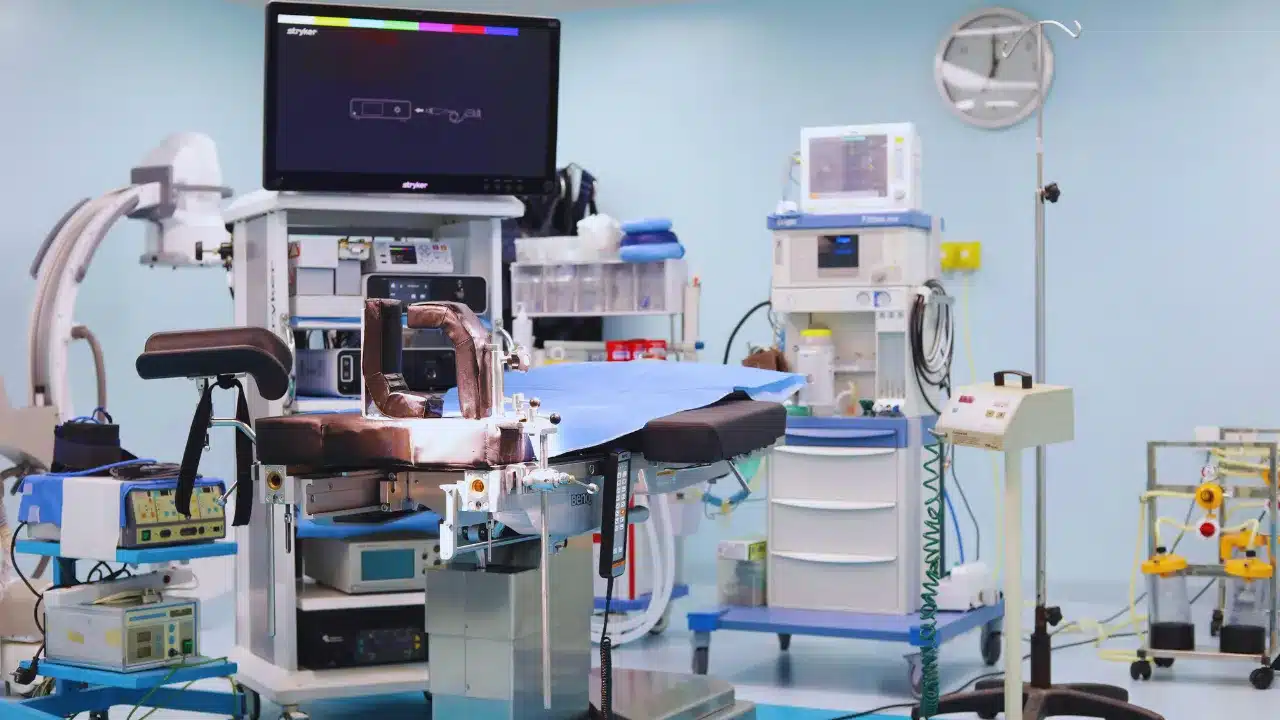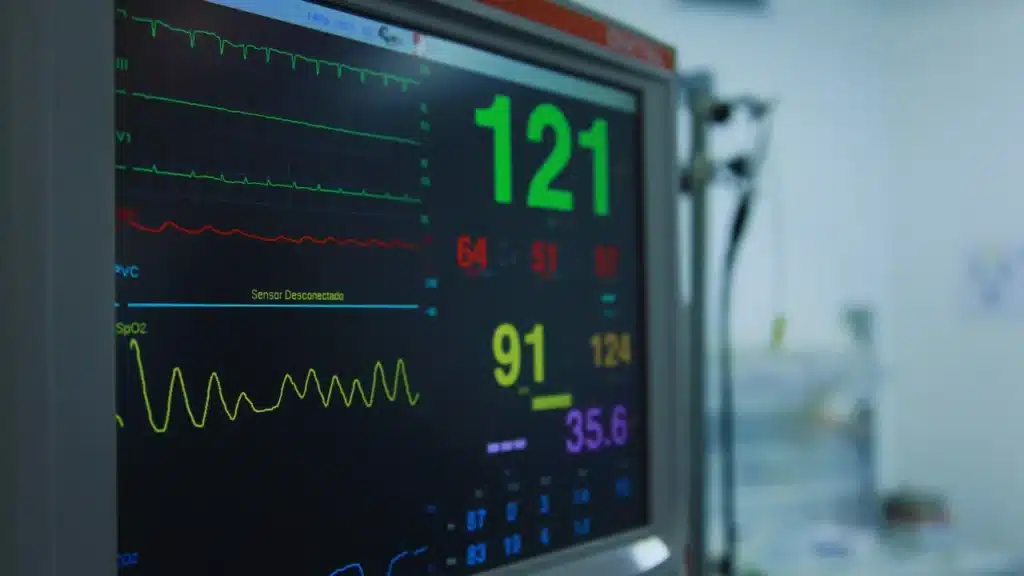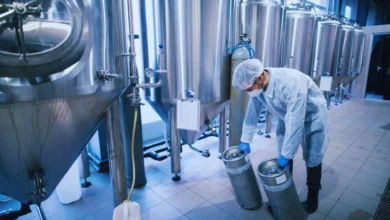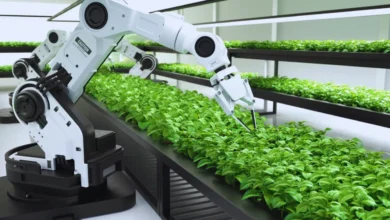
Cardiac Perfusion Technology: Heart Surgery Techniques
Cardiac perfusion technology plays a pivotal role in modern heart surgery, making complex procedures safer and more efficient. The primary function of this technology is to temporarily take over the work of the heart and lungs during surgery, ensuring that oxygen-rich blood circulates throughout the body when the heart is stopped for surgery. Whether it’s coronary artery bypass grafting (CABG), heart valve replacement, or heart transplantation, cardiac perfusion technology is indispensable in maintaining vital blood flow and oxygenation, which is critical for the patient’s survival.
As heart disease remains one of the leading causes of death globally, advancements in cardiac perfusion systems have significantly improved patient outcomes, reducing risks and enhancing recovery times. With a dedicated perfusionist at the helm, the technology ensures that surgeries can be performed with higher precision, allowing the surgical team to focus on the heart while the perfusion system supports the body’s basic life functions during the procedure.
What Is Cardiac Perfusion Technology?
Cardiac perfusion technology refers to the use of specialized machines that temporarily perform the functions of the heart and lungs during cardiac surgery. This technology becomes crucial when the heart must be stopped, which is common in surgeries like coronary artery bypass grafting (CABG) or heart valve repairs. The heart-lung machine ensures that blood is properly oxygenated and circulated throughout the body while the surgeon operates on the heart.
A perfusionist, a trained specialist, oversees the operation of these machines, ensuring they function smoothly throughout the procedure. The perfusionist monitors blood flow, oxygen levels, and temperature to maintain the patient’s stability. This technology enables the surgical team to perform heart surgery with precision while safeguarding the patient’s overall well-being. As a result, cardiac perfusion technology plays a vital role in the success of heart surgeries.
The Role of the Perfusionist in Cardiac Surgery
Perfusionists are essential members of the surgical team, responsible for operating heart-lung machines during cardiac surgery. They ensure the patient’s blood is adequately oxygenated and circulated while the surgeon works on the heart. With advancements in perfusion technology, newer machines offer improved control and precision, contributing to better patient outcomes. Perfusionists closely monitor blood flow, oxygen levels, and temperature throughout the procedure. Their expertise ensures that the patient remains stable, reducing the risk of complications. The perfusionist’s role is crucial for the success of complex surgeries like coronary bypass and heart valve repairs. Their skill and attention to detail directly impact the patient’s recovery and overall surgical outcome.
Overview of Cardiac Perfusion Equipment
Provides a quick overview of the essential equipment used in cardiac perfusion technology. These devices work in tandem to ensure that blood circulation and oxygenation are maintained during surgery. Each piece of equipment plays a specific role, contributing to the overall safety and success of heart surgeries. The heart-lung machine, oxygenator, blood pump, heat exchanger, and filter are all crucial in supporting the body’s functions while the surgeon operates on the heart. Overview of Cardiac Perfusion Equipment
| Equipment | Function | Use |
| Heart-Lung Machine | Maintains blood circulation and oxygenation during surgery. | Essential for heart surgery procedures |
| Oxygenator | increases blood oxygen levels and eliminates carbon dioxide. | Works in conjunction with the heart-lung machine |
| Blood Pump | Pumps blood through the body during surgery | Ensures adequate blood flow during cardiac surgery |
| Heat Exchanger | Regulates blood temperature during surgery | Prevents hypothermia or hyperthermia in patients. |
| Filter | Filters blood to remove air bubbles and debris | Ensures the blood remains free of contaminants during surgery |
How Cardiac Perfusion Technology Has Evolved

The evolution of cardiac perfusion technology dates back to the early 1950s when the first heart-lung machine was developed. These early machines were quite basic, performing simple functions to replace the heart and lungs during surgery. Over the years, significant advancements in technology have led to the development of automated and more precise systems. Modern perfusion machines offer better control, allowing perfusionists to monitor and adjust parameters in real time.
These improvements have made the machines more reliable, reducing the risk of complications during surgery. I will discuss how oxygenators, advanced filters, and miniaturized systems have further enhanced the overall safety and efficiency of cardiac surgeries. With the continuous innovation in perfusion technology, heart surgeries are now safer and more effective, contributing to better outcomes for patients and faster recovery times.
Technological Advancements in Perfusion Systems
Modern cardiac perfusion technology focuses on improving the safety and precision of heart surgeries. Innovations such as automated heart-lung machines with real-time monitoring capabilities and enhanced blood oxygenators are providing surgeons and perfusionists with more accurate and efficient tools. These advancements ensure better patient outcomes by making surgeries safer and more effective. Perfusion systems have become more reliable, with features that reduce risks and enhance overall surgical precision. Through continuous innovation, these technologies are helping perfusionists and surgeons make more informed decisions during surgery, improving recovery times and minimizing complications.
- Miniaturization of Equipment: Smaller and more compact cardiac perfusion machines have revolutionized heart surgeries. These advanced, portable systems are less invasive, requiring smaller incisions. With less trauma to the body, patients experience quicker recovery times and fewer complications. The size reduction also allows for easier integration into modern surgical settings and more precise control during procedures.
- Improved Oxygenation Techniques: Newer oxygenators in cardiac perfusion systems provide superior blood oxygenation. These systems ensure that oxygen levels are maintained at optimal levels, preventing oxygen deprivation during surgery. Better oxygenation supports vital organ function, reducing the likelihood of organ damage. This advancement is particularly important in long surgeries where oxygen levels can fluctuate.
- Real-time Monitoring: Modern perfusion systems feature advanced real-time monitoring capabilities. These systems continuously track crucial parameters like blood gases, pressure, and temperature during surgery. With real-time data, perfusionists can make immediate adjustments to ensure the patient remains stable. This enhanced monitoring allows for faster detection of potential issues, improving surgical outcomes and patient safety.
Benefits of Cardiac Perfusion Technology
Cardiac perfusion technology has a profound impact on the success and outcomes of heart surgeries. It enhances the precision of procedures by ensuring the heart and lungs are properly supported during surgery. With continuous advancements in technology, these systems allow surgeons to focus on the heart while maintaining optimal blood circulation and oxygenation. The improvements in heart-lung machines and monitoring systems contribute directly to better patient outcomes. Perfusion technology plays a crucial role in increasing survival rates and minimizing complications. Its impact extends beyond surgery, positively affecting recovery and the patient’s quality of life.
- Improved Survival Rates: The proper functioning of the heart-lung machine during surgery helps maintain oxygenation and circulation, increasing the chances of a successful surgery. This results in higher survival rates for patients undergoing complex heart procedures.
- Reduced Risk of Complications: Real-time monitoring systems help detect any issues or abnormalities early, allowing perfusionists and surgeons to address potential problems quickly. This significantly reduces the risk of complications during surgery, leading to safer outcomes.
- Faster Recovery: Efficient oxygenation and blood circulation through advanced perfusion technology contribute to quicker recovery. With better organ support during surgery, patients experience shorter hospital stays and fewer postoperative complications.
- Better Quality of Life: Successful heart surgeries that benefit from perfusion technology lead to improved heart function. This enhances the patient’s overall quality of life, allowing them to resume normal activities and experience fewer limitations post-surgery.
Comparison of Cardiac Perfusion Equipment
The comparison highlights the evolution of cardiac perfusion equipment over the years. As technology has advanced, so have the capabilities of the equipment used during heart surgeries. Older, conventional heart-lung machines are manual and prone to human error, while modern systems offer automation and real-time monitoring, significantly enhancing accuracy and patient safety. Similarly, advancements in oxygenator materials and techniques have improved oxygen exchange efficiency, reducing potential harm to blood cells.
The development of advanced filters ensures cleaner blood circulation, minimizing risks and complications post-surgery. These technological innovations have played a crucial role in improving the overall effectiveness and reliability of heart surgeries, ultimately leading to better patient outcomes.
| Type of Equipment | Advancement in Technology | Benefit |
| Conventional Heart-Lung Machines | Manual operation and less precision | More prone to human error, less efficient |
| Advanced Heart-Lung Machines | Automated systems with real-time monitoring | More accurate, less risk, better patient outcomes |
| Modern Oxygenators | Improved materials and techniques for oxygen exchange | Higher oxygenation efficiency, less blood damage |
| Advanced Filters | Air bubble and particulate removal at high efficiency | Ensures cleaner blood, reducing post-operative complications |
Cardiac Perfusion and Its Applications
Cardiac perfusion technology is integral to several key heart surgeries, ensuring the heart and lungs function optimally during operations. It provides critical support by maintaining blood circulation and oxygenation when the heart is temporarily stopped. This technology is used in various procedures, including coronary artery bypass grafting (CABG), heart valve surgeries, and heart transplants. The advancement of perfusion technology has made these complex surgeries safer and more effective. By managing blood flow and oxygen levels, perfusionists play a key role in improving patient outcomes. Perfusion technology ensures that the organs receive adequate oxygenation during surgery, which is crucial for a successful recovery.
- Coronary Artery Bypass Grafting (CABG): During CABG, perfusion technology reroutes blood around blocked arteries, allowing blood to reach the heart muscles. This helps alleviate symptoms of heart disease, such as chest pain and shortness of breath, improving heart function.
- Heart Valve Surgeries: For patients undergoing valve repair or replacement, perfusion technology helps maintain stable circulation and oxygenation while surgeons work on the heart. This ensures the heart continues to receive the necessary support throughout the procedure.
- Heart Transplants: Perfusion technology is vital for heart transplants as it preserves and oxygenates the donor heart before transplantation. This ensures that the heart remains viable until it is successfully implanted in the recipient.
The Future of Cardiac Perfusion Technology
The future of cardiac perfusion technology is filled with exciting possibilities, driven by advancements in artificial intelligence, machine learning, and robotics. These technologies promise to further enhance the precision and efficiency of heart surgeries. Innovations like predictive algorithms can help anticipate potential complications, allowing for timely interventions. Additionally, robotic assistance is expected to support perfusionists in managing complex cases, reducing human error, and enhancing decision-making. As these technologies evolve, they hold the potential to revolutionize cardiac care, leading to even better outcomes for patients undergoing heart surgery. Continuous improvements in these areas will ultimately make cardiac perfusion systems smarter, more reliable, and capable of offering superior support during surgery.
- Artificial Intelligence Integration: AI will enable real-time decision-making during heart surgeries by continuously analyzing patient data. It will predict potential complications and adjust perfusion parameters without manual input. By automating these tasks, AI reduces the risk of human error and improves the consistency of patient care. This real-time adaptability ensures optimal outcomes during surgeries.
- Machine Learning Algorithms: Machine learning algorithms will analyze data from past surgeries to optimize settings for heart-lung machines. These algorithms will adapt to the specific needs of each patient, providing personalized care during surgery. By continuously learning from new data, they improve the efficiency of perfusion processes. This leads to better patient outcomes by ensuring the most effective settings are applied.
- Robotic Assistance: Robotics will assist perfusionists by providing enhanced precision and control during cardiac surgeries. These advanced systems will help manage the heart-lung machine more effectively, reducing the chances of errors. Robotic assistance will also allow for smoother handling of complex cases, ensuring better overall surgical outcomes. The integration of robotics into perfusion practices will streamline surgeries and reduce the physical burden on medical staff.
- Predictive Tools for Complications: Predictive tools will use data analytics to identify complications before they become critical during surgeries. By analyzing real-time data, these tools can predict changes in patient conditions, allowing for proactive interventions. The early detection of potential issues helps perfusionists and surgeons make informed decisions. This ability to predict complications reduces risks and enhances patient safety.
- Smarter Monitoring Systems: Future monitoring systems will integrate advanced real-time data analytics to track a wide range of patient metrics. These systems will provide instant insights into critical parameters such as blood gases, pressure, and temperature. Smarter monitoring will allow for quicker adjustments to perfusion settings, ensuring precision during surgery. This real-time data feedback loop will lead to improved surgical outcomes and fewer complications.
Wrapping Up
cardiac perfusion technology has transformed heart surgery, allowing patients to undergo high-risk procedures with increased safety and better outcomes. The continuous evolution of this technology, from early heart-lung machines to today’s automated, real-time monitoring systems, highlights the significant strides made in medical technology. Perfusionists, armed with cutting-edge equipment, play an essential role in ensuring the proper circulation and oxygenation of blood during surgery.
As we look ahead, further innovations in artificial intelligence and robotics are poised to make cardiac perfusion systems even more precise and reliable. These advancements will not only reduce the risk of complications but will also enhance recovery times, ultimately improving the quality of life for patients. Cardiac perfusion technology is undeniably a cornerstone of modern heart surgery, and its continued development promises to deliver even greater benefits to patients and medical professionals alike.
FAQs
What is the role of a perfusionist in heart surgery?
A perfusionist is a trained medical professional responsible for operating the heart-lung machine during heart surgeries. They ensure the patient’s blood is oxygenated and circulated properly when the heart is temporarily stopped.
How does cardiac perfusion technology help during heart surgeries?
Cardiac perfusion technology takes over the function of the heart and lungs during surgery, allowing the surgeon to operate on a still heart. The heart-lung machine pumps oxygen-rich blood throughout the body, ensuring that the organs and tissues receive the necessary oxygen and nutrients.
What are the risks involved with cardiac perfusion technology?
While cardiac perfusion technology has greatly advanced and improved safety, there are still some risks involved. These include blood clotting, which can occur if the blood isn’t properly anticoagulated during surgery. There’s also the potential for air embolisms if air enters the bloodstream and organ dysfunction due to prolonged use of the heart-lung machine. However, skilled perfusionists and modern technology minimize these risks, and ongoing improvements continue to enhance safety.
How has cardiac perfusion technology advanced over time?
Cardiac perfusion technology has made significant strides since its inception. Early machines were bulky and manual, but now, heart-lung machines are automated with real-time monitoring systems that provide precise control over the patient’s blood flow and oxygen levels. Equipment has been miniaturized, making it more efficient and less invasive.
What types of surgeries require cardiac perfusion technology?
Cardiac perfusion technology is essential for several critical heart surgeries. These include coronary artery bypass grafting (CABG), where blood flow is rerouted around blocked arteries, heart valve replacements or repairs, and heart transplants.
Can cardiac perfusion technology be used in non-cardiac surgeries?
Although cardiac perfusion technology is mainly used in heart surgeries, research is being conducted on its potential applications in other medical fields. For example, scientists are exploring its use in organ transplants, where perfusion systems could be used to preserve and oxygenate donor organs outside the body.
What is the future of cardiac perfusion technology?
The future of cardiac perfusion technology looks promising, with innovations like artificial intelligence, machine learning, and robotics playing a significant role. AI will enable real-time data analysis to predict complications and optimize machine settings.




